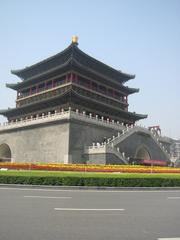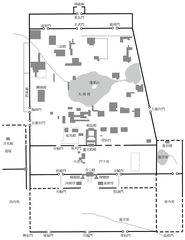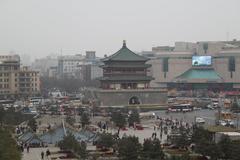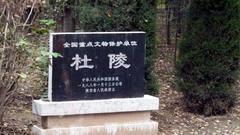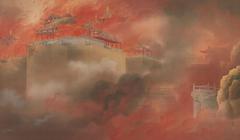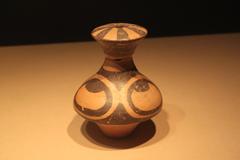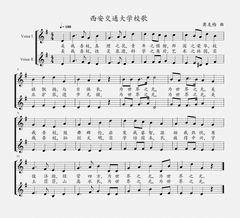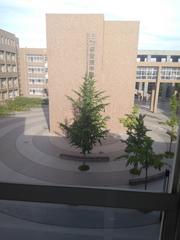
Visiting the Great Mosque of Xi’an: History, Tips, and More
Date: 17/08/2024
Introduction
The Great Mosque of Xi’an, also known as the Huajue Xiang Mosque, is a remarkable symbol of the harmonious blending of Chinese and Islamic traditions. Situated in the heart of Xi’an, the historic starting point of the Silk Road, this mosque is both an active place of worship and a monument to centuries of cultural exchange. Its origins trace back to the Tang Dynasty (618–907 AD), when Emperor Xuanzong commissioned a mosque for the growing Muslim community in Chang’an, the ancient name for Xi’an (Wikipedia; Mosqpedia). Over the centuries, the mosque has been expanded and renovated, most notably during the Ming and Qing dynasties, resulting in the unique architectural form we see today.
This guide presents a comprehensive overview of the Great Mosque of Xi’an, including its fascinating history, architectural features, visitor information, and travel tips to help you make the most of your visit.
Table of Contents
- History of the Great Mosque of Xi’an
- Architectural Features
- Visitor Information
- Nearby Attractions
- Frequently Asked Questions (FAQ)
- Conclusion
- References
History of the Great Mosque of Xi’an
Tang Dynasty Origins
The Great Mosque was established in 742 AD, during the reign of Emperor Xuanzong of the Tang Dynasty, to serve the religious needs of the increasingly diverse population in Chang’an, a cosmopolitan city on the Silk Road (Wikipedia). The arrival of Muslim traders and diplomats from Central and West Asia led to the formation of a thriving Muslim community, and the construction of the mosque reflected the city’s openness to cultural and religious diversity.
Development in Later Dynasties
During the Song Dynasty (960–1279 AD), the mosque continued to serve as a spiritual and community center, evidenced by surviving imperial plaques from this era. The structure underwent substantial renovation during the Yuan Dynasty (1271–1368 AD) when it was known as Huihui Wanshansi. Its most significant transformation occurred in 1384 AD, under the Ming Dynasty, when the mosque was rebuilt into its current form with the support of the imperial government (Mosqpedia). The Qing Dynasty (1644–1911 AD) saw further enhancements, including the addition of the grand front gate (Paifang) and Sebil, further cementing the mosque’s status as a community anchor.
Architectural Features
Courtyards and Layout
The Great Mosque’s design is a harmonious blend of traditional Chinese and Islamic elements. Covering over 13,000 square meters, the complex is organized along an east–west axis (unlike most Chinese religious buildings, which are oriented north–south), aligning with the direction of Mecca (Mosqpedia). The mosque is comprised of four successive courtyards, each with its own unique features:
- First Courtyard: Features a large wooden archway and a decorated screen wall, setting a tranquil tone.
- Second Courtyard: Includes the Xingxin Tower, used for the call to prayer, and lush landscaping reminiscent of Chinese gardens.
- Third Courtyard: Houses the Phoenix Pavilion, a hexagonal structure adorned with intricate woodwork and calligraphy.
- Fourth Courtyard: Contains the main prayer hall, an expansive wooden structure that can accommodate up to 1,000 worshippers. The prayer hall is notable for its high beams, carved columns, and a mihrab (prayer niche) facing Mecca.
Decorative Elements
Throughout the mosque, you’ll find a unique blend of decorative motifs:
- Chinese Elements: Pagoda-style roofs, upturned eaves, wooden beams, and latticework, following traditional Chinese architectural principles.
- Islamic Influences: Extensive use of geometric patterns, Arabic calligraphy, and inscriptions of Quranic verses.
- Fusion Motifs: Dragon and phoenix symbols, signifying prosperity and harmony, coexist with Islamic floral and geometric designs.
Wooden plaques inscribed with Chinese and Arabic calligraphy illustrate the deep cultural integration present at the mosque (Mosqpedia).
Visitor Information
Location and Getting There
The mosque is located in the Muslim Quarter, near the Drum and Bell Towers, making it easily accessible and ideal for combining with other attractions:
- Bell Tower to Mosque: ~900 meters, 10 minutes’ walk.
- Drum Tower to Mosque: ~300 meters, 5 minutes’ walk.
- Xi’an Xianyang Airport: ~35 km, about 1 hour 20 minutes by shuttle to Bell Tower, then walk.
- Xi’an North Railway Station: ~16 km, 40 minutes by Metro Line 2.
- Xi’an Railway Station: ~5 km, 25 minutes by taxi.
For more detailed directions, refer to China Discovery.
Opening Hours and Tickets
- Opening Hours: Daily from 08:00 to 21:00.
- Tickets: ¥25.0 (March–November, busy season); ¥15.0 (December–February, slack season). Discounts are available for students and seniors (China Discovery).
Dress Code and Etiquette
As an active place of worship, the mosque requires visitors to dress and behave respectfully:
- Wear modest clothing: long sleeves and trousers/skirts preferred.
- Avoid shorts, sleeveless tops, or revealing attire.
- Women may choose to cover their heads as a sign of respect.
- Remove shoes before entering the prayer hall.
- Photography is allowed in the courtyards and gardens, but always ask permission before photographing worshippers or inside the prayer hall.
Guided Tours
Guided tours are available and recommended for gaining deeper insight into the mosque’s history and significance. Local guides provide context on architectural details and the cultural heritage of the Hui Muslim community. Many tour operators, such as China Discovery, offer comprehensive packages including transportation and tickets.
Nearby Attractions
The Great Mosque’s central location in Xi’an makes it easy to visit other landmarks:
- Muslim Quarter: A bustling area known for its vibrant street food scene and traditional markets.
- Drum Tower & Bell Tower: Historic towers offering panoramic city views.
- Xi’an City Wall: One of China’s best-preserved city walls, ideal for a stroll or bike ride.
- Terracotta Warriors Museum: World-renowned archaeological site just outside the city.
More about nearby sites: Travel Setu.
Frequently Asked Questions (FAQ)
What are the Great Mosque of Xi’an opening hours?
The mosque is open daily from 08:00 to 21:00.
How do I buy tickets?
Tickets can be purchased at the entrance. Prices are ¥25.0 in the busy season and ¥15.0 in the slack season.
Are there guided tours?
Yes, guided tours are available through local operators and at the site.
Is photography allowed?
Photography is generally permitted in the courtyards, but always seek permission before photographing inside the prayer hall or of worshippers.
Is the mosque accessible for people with disabilities?
The mosque provides wheelchair access and facilities for differently-abled visitors.
Conclusion
The Great Mosque of Xi’an is a living symbol of cultural integration, representing centuries of coexistence between Chinese and Islamic traditions (Wikipedia; Mosqpedia). Its serene courtyards, exquisite architectural details, and deep spiritual heritage make it an essential destination for anyone interested in history, art, or intercultural exchange. Whether you’re drawn by its historical significance, architectural beauty, or vibrant community, a visit to the Great Mosque of Xi’an promises a rewarding and enriching experience (Travel Setu).
For more travel tips, updates, and in-depth guides, download our mobile app Audiala, visit our website, or follow us on social media.


